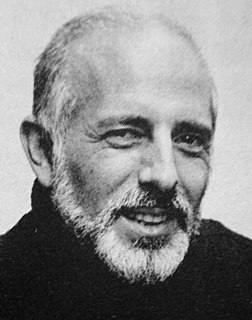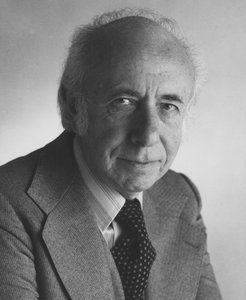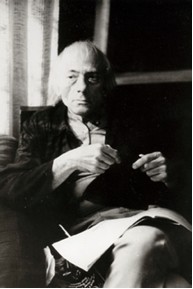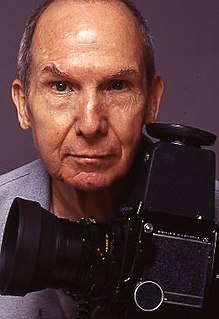Related Research Articles

Agnes George de Mille was an American dancer and choreographer.

Gordon Roger Alexander Buchanan Parks was an American photographer, musician, writer and film director, who became prominent in U.S. documentary photojournalism in the 1940s through 1970s—particularly in issues of civil rights, poverty and African-Americans—and in glamour photography.

Jerome Robbins was an American choreographer, director, dancer, and theater producer who worked in classical ballet, on stage, film, and television.

Morton Gould was an American composer, conductor, arranger, and pianist.

Sono Osato was an American dancer and actress.

Geoffrey Lamont Holder was a Trinidadian-American actor, dancer, musician, and artist. He was a principal dancer for the Metropolitan Opera Ballet before his film career began in 1957 with an appearance in Carib Gold. In 1973, he played the villainous Baron Samedi in the Bond film Live and Let Die. He also carried out advertising work as the pitchman for 7 Up.

Lincoln Edward Kirstein was an American writer, impresario, art connoisseur, philanthropist, and cultural figure in New York City, noted especially as co-founder of the New York City Ballet. He developed and sustained the company with his organizing ability and fundraising for more than four decades, serving as the company's general director from 1946 to 1989. According to the New York Times, he was "an expert in many fields," organizing art exhibits and lecture tours in the same years.
Joseph Mielziner was an American theatrical scenic, and lighting designer born in Paris, France. He was described as "the most successful set designer of the Golden era of Broadway", and worked on both stage plays and musicals.
Fred Fehl was an American photographer of Viennese birth and upbringing. He was the cousin of the art historian Philipp Fehl and the inventor and Electrical Engineer Paul Eisler.

The Ballets Russes was an itinerant ballet company based in Paris that performed between 1909 and 1929 throughout Europe and on tours to North and South America. The company never performed in Russia, where the Revolution disrupted society. After its initial Paris season, the company had no formal ties there.
David Gordon is an American dancer, choreographer, writer, and theatrical director prominent in the world of postmodern dance and performance. Based in New York City, Gordon's work has been seen in major performance venues across the United States, Europe, South America and Japan, and has appeared on television on PBS's Great Performances and Alive TV, and the BBC and Channel 4 in Great Britain.
Lois Greenfield is an American photographer best known for her unique approach to photographing the human form in motion. Born in New York City, she attended Hunter College Elementary School, the Fieldston School, and Brandeis University. Greenfield majored in Anthropology and expected to become an ethnographic filmmaker but instead, she became a photojournalist for local Boston newspapers. She traveled around the world on various assignments as a photojournalist but her career path changed in the mid-1970s when she was assigned to shoot a dress rehearsal for a dance concert. Greenfield has since specialized in photographing dancers in her photo studio as part of her exploration of the expressive potential of movement.

Louis Faurer was an American candid or street photographer. He was a quiet artist who never achieved the broad public recognition that his best-known contemporaries did; however, the significance and caliber of his work were lauded by insiders, among them Robert Frank, William Eggleston, and Edward Steichen, who included his work in the Museum of Modern Art exhibitions In and Out of Focus (1948) and The Family of Man (1955).
Kenn Duncan was an American dance photographer.

Jack Mitchell was an American photographer. He photographed American artists, dancers, film and theatre performers, musicians and writers. His portraiture, lighting skill, and ability to capture dancers in what he termed "moving stills" made him one of the most important dance photographers of the 20th century.
Eugene Louis Faccuito, known professionally as Luigi, was an American jazz dancer, choreographer, teacher, and innovator who created the jazz exercise technique. The Luigi Warm Up Technique is a training program that promotes body alignment, balance, core strength, and "feeling from the inside." It is also used for rehabilitation. This method became the world's first standard technique for teaching jazz and musical theater dance.
Randy Barceló was a Cuban dancer, photographer, interior designer, and all-around artist. He was also known for his set and costume designs for theatre and film.
Martha Joan Swope was an American photographer of theatre and dance. She died from Parkinson's disease on January 12, 2017 at the age of 88.
Dixie Sheridan is a photojournalist, based in New York City, specializing in the documentation of the performing arts, primarily theater, Off-Broadway and Off-Off-Broadway. The New York Public Library has acquired Sheridan's photographic archive for its New York Public Library for the Performing Arts, located at the Lincoln Center for the Performing Arts, where it will eventually be made available to the public.
Max Waldman (1919-1981) was a dance and theater photographer who was also well known for his dramatic shots on a great range of subjects from football players to immigrants. The photographer became best known for his portraits of such celebrated ballet dancers as Mikhail Baryshnikov and Natalia Makarova through his books, including "Waldman on Theater" and "Waldman on Dance." Contemporary photographers such as Daniel Nicoletta, was influenced by Waldman. His photographs were exhibited in numerous group and one man shows in a wide variety of venues, including; the New York Public Library, the La Jolla Museum of Art, and the Rose Museum of Brandeis University. His work is also found as part of many private and public collections, such as the Metropolitan Museum of Modern Art in New York, and the George Eastman House.
References
- 1 2 3 Shields, Dr. David S. "Alfredo Valente". Broadway Photographs. University of South Carolina. Retrieved 14 August 2020.
- ↑ "Alfredo Valente negatives". New York Public Library. New York Public Library for the Performing Arts. Retrieved 14 August 2020.
- ↑ McShea, Megan. "Notes on the short film "Art Discovers America"". The Primary Source blog. Archives of American Art. Retrieved 17 August 2020.
- 1 2 "Alfredo Valente obituary". The New York Times. June 29, 1974. Retrieved 17 August 2020.